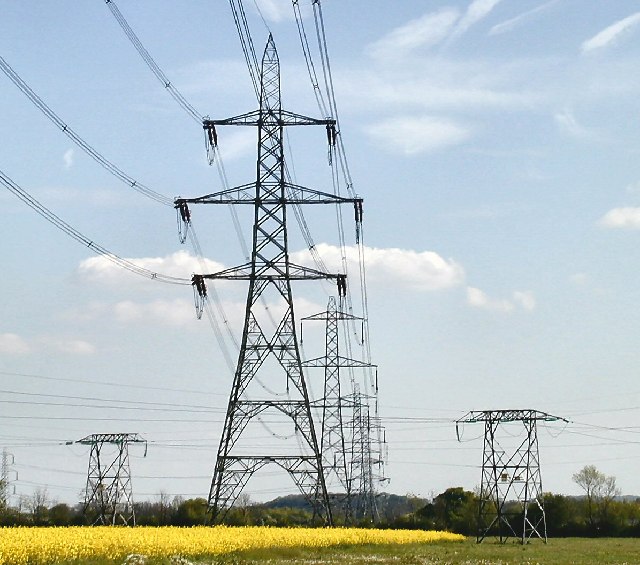The United States Supreme Court issued a long-awaited decision in Utility Air Regulatory Group v. EPA (No. 12-1146) this week, resolving the last of many multi-year legal challenges to EPA’s first generation of climate protections under the Clean Air Act.
The U.S. Supreme Court ruled 7-to-2 that the U.S. Environmental Protection Agency (EPA) permissibly read the Clean Air Act to require large new or modified industrial pollution sources to deploy modern pollution controls for greenhouse gases. Thus, new and rebuilt large emitters of other regulated pollutants such as particulate matter, sulfur dioxide, and oxides of nitrogen subject to the Clean Air Act’s pre-construction review permit program must use the “best available control technology” to control climate pollution.
This is now the third decision in which the Court has affirmed the application of the Clean Air Act to climate pollution.
A 5-to-4 majority of the court also held that EPA must narrow its permit program to avoid applying the permitting program to many smaller sources that EPA itself had taken steps to exclude from regulation.
The UARG case emphatically puts an end to the misplaced claims by some who question EPA’s bedrock authority to address the deleterious carbon pollution from power plants and other industrial sources under section 111 and the Prevention of Significant Deterioration (PSD) permit program of the Clean Air Act. The central question in the UARG case was not whether EPA must address climate-destabilizing pollution from power plants and other industrial sources, but rather how EPA should carry out these essential clean air protections.
When it took up the UARG case, the Supreme Court decided not to review EPA’s rigorous, science-based determination in 2009 that six greenhouse gases endanger the public health and welfare of current and future generations — the legal foundation for addressing climate pollution under the Clean Air Act. The Court similarly declined to review EPA’s landmark rules in 2010 setting the first limits on greenhouse gas emissions from new passenger vehicles (the Clean Car Standards). The Supreme Court’s review of UARG was focused exclusively on EPA’s interpretation of the PSD permitting program. Nothing about the Supreme Court’s final decision in UARG affects the Clean Car Standards or the science-based finding that greenhouse gas emissions endanger public health and welfare and therefore must be addressed under the Clean Air Act. And in UARG, seven justices of the Court agreed with EPA that large industrial sources that are already required to obtain PSD permits due to their emissions of other regulated pollutants must limit their greenhouse gas emissions with “best available control technology.”
The UARG case also reinforces EPA’s clear legal authority to reduce carbon pollution from the nation’s fossil fuel-fired power plants, which emit nearly forty percent of the United States’ carbon dioxide and are currently subject to no national limits on carbon pollution. As described in detail on our earlier blogs, EPA has proposed long-overdue and much-needed rules under section 111 of the Clean Air Act that would, for the first time, require new power plants to use advanced technologies available for carbon reduction — and would reduce carbon pollution from existing power plants to 30 percent below 2005 levels by 2030 through available cost-effective solutions. Together, these rules would cut carbon pollution from our nation’s largest source, achieve significant reductions in other harmful pollutants that are emitted together with carbon pollution from fossil fuel-fired power plants, and spur complementary action in other countries.
The Supreme Court has affirmed time and again EPA’s authority to regulate carbon pollution, and it further reiterated this precedent in UARG:
- Seven years ago in Massachusetts v. EPA, the Supreme Court held that “greenhouse gases fit well within the Act’s capacious definition of ‘air pollutant,’” and are therefore clearly within EPA’s authority to regulate under the Clean Air Act. 549 U.S. 497, 532 (2007). In UARG, the Court rejected requests by some of the parties to overturn this fundamental holding.
- Four years later in American Electric Power Co. v. Connecticut, the Supreme Court explicitly acknowledged EPA’s authority to limit carbon pollution from existing power plants, holding that it was “plain” that section 111 of the Clean Air Act “speaks directly to emissions of carbon dioxide from the defendants’ plants.” 131 S. Ct. 2527, 2537 (2011).
- During the February 24, 2014 oral argument in UARG, industry attorney Peter Keisler conceded, in response to questioning from Justice Ginsburg, that EPA has clear authority to address climate pollution from power plants under section 111. The Court specifically acknowledged and reiterated this holding in UARG – noting that the section 111 is “not at issue here” and that “no party in American Electric Power argued [section 111] was ill suited to accommodating greenhouse gases.”
It is always an important occasion when the Supreme Court weighs in on legal issues affecting the Clean Air Act. It’s especially important when the Court is addressing the climate pollution that presents a clear and present danger to the health of our communities and families and to our prosperity.















